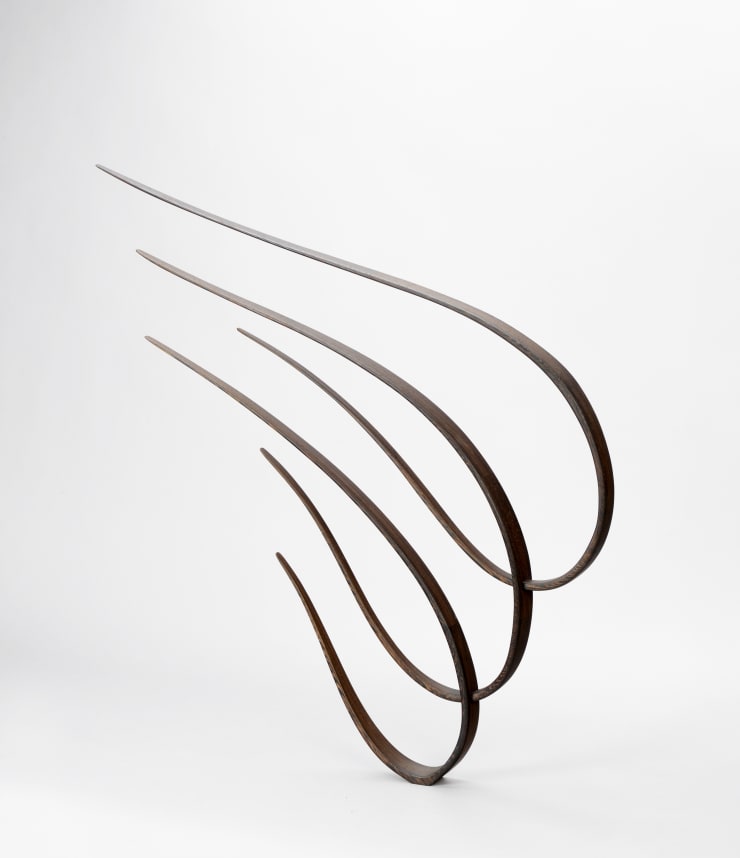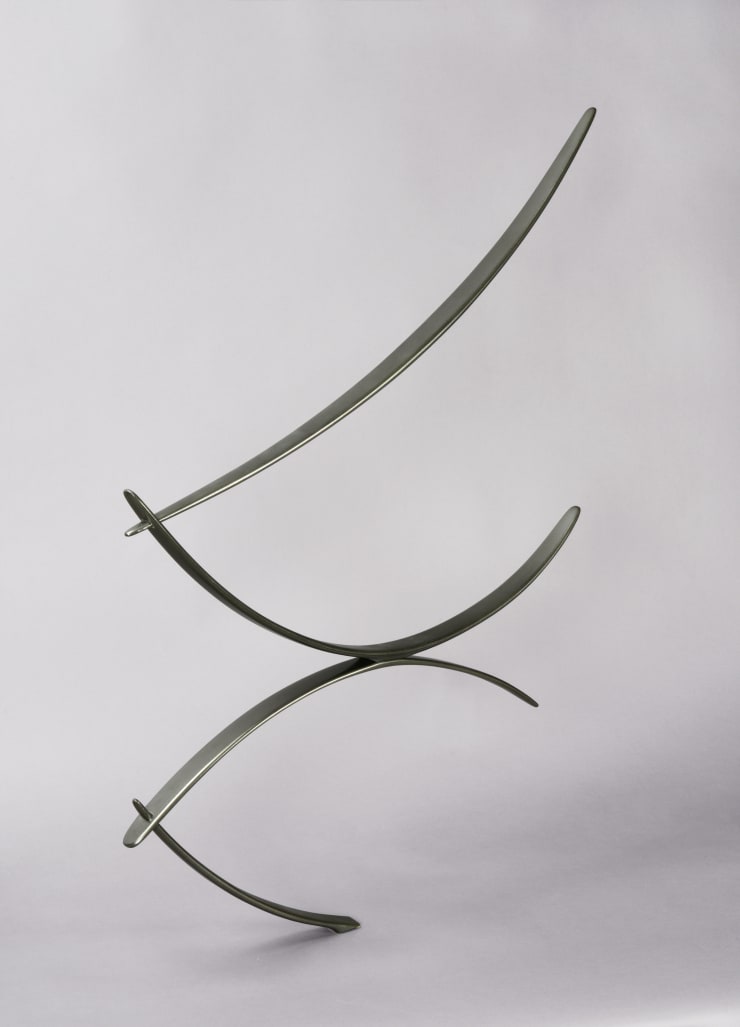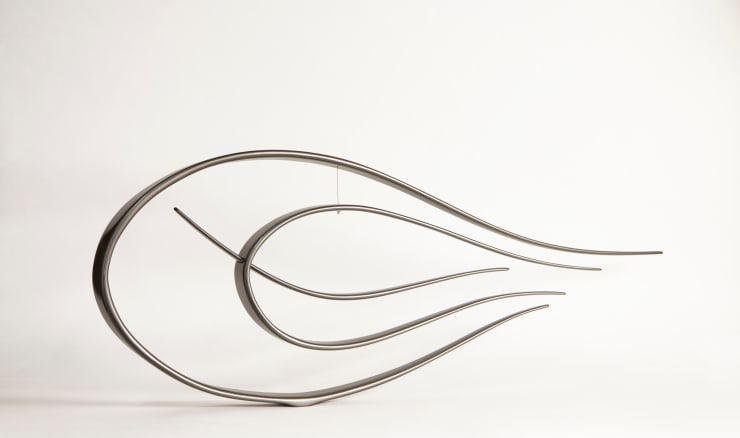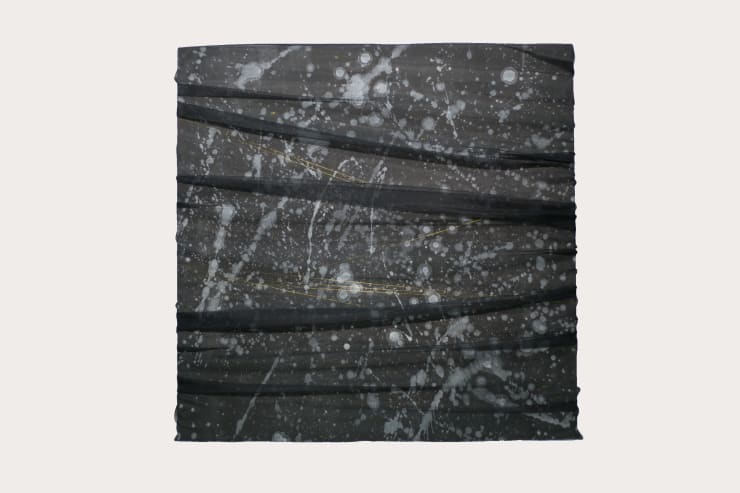Will Clift
Moments of Stillness
“I’m conveying more of a feeling than a message – I hope viewers will slow down and feel the precariousness of the balance, the effect of gravity on the mass of the sculpture, deep down in their bodies. It’s a reflex. I’m trying to make [the visitor] take a breath, slow down, feel quiet, perhaps feel uneasy about whether the sculpture will stand or fall.“
Clift’s sculptures are about an intuitive, emotional response, rather than intellectual processing. His art is a respite from the hectic pace of the world, the sense that we are always connected. He promotes the idea of sitting still and being, rather than imparting or processing information. “I give people an excuse to slow down and look, and not to think at all. I hope the sculpture will give something to somebody, not related to thinking. A moment of stillness. That’s true for a five metre piece and a one metre piece.”
In Will Clift’s sculptures, the rigorous planning, the precise engineering, has happened in the studio. On completion, the feeling begins.
Childhood and Early Influences
Will Clift’s sculptures are marvels of delicacy and balance, sometimes described as “drawings in space.” Converting weight and strength into balance and poise, the artist’s work may be seen in corporate and private collections worldwide. What was the journey of this artist who merges art and engineering to create sculptural harmonies of subtle gesture and balance?
Born in Santa Fe, New Mexico in 1978, Clift grew up in a high altitude desert – a place where it is hot but it snows in the winter. “Growing up, I was surrounded by the beauty of the landscapes. This incubated my sensitivity to beauty.” His father, a landscape photographer, made his living from this arid, harsh environment. Working with traditional photographic materials, his exposures would often last twenty minutes, before developing the photographs himself with chemicals in the dark room. Describing the unique scenery of the desert, Clift remarks: “There is not enough water… everything is skeletal. Plants and animals are stripped down to their core form; there are cactuses, old gnarled trees. Desert ecology makes a particular kind of growth happen. It’s a pure form.”
Clift’s earliest artistic influences were photographers — his father, as well as Edward Weston, a photographer of the American West famous for his photographs of abstracted nudes and still lifes, among others. There were renowned local artists too, and Clift met Georgia O’Keeffe at one of her last birthday parties before she died, his father having photographed her. Gradually, Clift’s artistic influences broadened to some of the great 20th century sculptors such as Giacometti, Brancusi, and later to two of his most significant sculptural influences: Alexander Calder and Richard Serra.. Noting how the mass of Richard Serra’s rolled steel sheets undermines the visitor’s own perceived centre of gravity, Clift remarks: “This is a similar feeling to what I am trying to achieve with fewer materials. He uses mass, I use lack of mass. Serra harnesses force and weight, I am trying to apply delicacy and gesture.”
Academic Background, Becoming an Artist
In 1998, Clift entered the prestigious Stanford University, pursuing B.S. and M.S. degrees that combined psychology, business, and engineering. He notes how he has always been “more interested in the connections between disciplines than in any single area.” Stanford’s education was mathematical, intellectual, yet holistic: it provided a forum for his artistic development: he began exhibiting abstract sculptures whilst still an undergraduate, presenting his first solo show a few months after finishing his Masters. Since 2006, art has been his sole focus.
Development of Scale and Material
Will Clift’s early sculptures often harnessed wood and bronze, but the scale of his projects has grown over time, and outdoor sculptures required a new approach to materials. Learning from the aerospace and construction industries, he employed innovative composite materials for shape and durability.
Will Clift was quickly in demand: In 2003 he executed his first commissions for residential developments in New Mexico and Colorado. Multiple projects followed each year: in 2006, he was commissioned to create a six-foot sculpture for the Ritz Carlton in Miami, Florida. In 2010, he created 15 sculptures for the Four Seasons Hotel in Denver, Colorado.
In 2015 he built four large-scale sculptures in Taipei, and one in L’Avenue, Shanghai. Other clients have included banks, foundations, a US Senator’s office, as well as headquarters of corporations, such as Exelon in Washington, D.C..
Site-specific installations require a ground-up approach to design and choice of material. When the artist was asked to create six suspended sculptures at the Waterfront Center in Hoboken in 2016, he used a carbon fiber composite structure to ensure they were light enough to turn gently in the air, mirroring the movements of seagulls and waves. 2016’s Sculpture by the Sea in Perth, Australia, needed to have the resilience to withstand both the harsh environmental conditions of a site just a few feet from the coast, and “support the occasional mischievous kid who decided to climb the sculpture.”
Gesture and Movement
Gesture is a driving force in Will Clift’s work: “I begin each sculpture with a form or a movement that I notice, in an instant, in the world around me. This moment of recognition is the most essential part of my process; it relies on intuition, when emotion and intellect are in balance.” When discussing his work in the context of the wider art world, he observes that the gesture of ink painting links his practice to the Chinese tradition: “Gesture and movement are what I am trying to capture in static form.”
The Future: Scale and Collaboration
The artist points to two aspects of his ouput which he would like to develop further. The first is larger, monumental scale work – 10m, 20m tall or wide, “pushing the boundaries of what modern materials and engineering can produce.” As a form gets larger, a person can walk through it, under it, around it: the relationship changes. His ambitions coincide with scientific advancements in materials: Clift is now able to combine the most cutting-edge composites with computer-aided structural optimization.
Collaborations also present potential for the future. Last year, Clift was a visiting artist at Stanford University, where he partnered with a dance choreographer and music composer, allowing the rhythm of the work to be underscored with sound and movement. “This allowed me to… explode my work and build it up again.” At Ink Asia, Fall Awakening affirms the artist’s commitment to sculpture as balance and rhythm, and his ability to bring form into life.
-
 Circling In, 2017
Circling In, 2017 -
 Enclosing Form, Following Through, 2017
Enclosing Form, Following Through, 2017 -
 Enclosing Form, Following Through, a Progression, 2017
Enclosing Form, Following Through, a Progression, 2017 -
 Four Pieces Reaching, 2017
Four Pieces Reaching, 2017 -
 Four Pieces Reaching Up, Suspended, 2017
Four Pieces Reaching Up, Suspended, 2017 -
 Three Curving Back Over Each Other, 2017
Three Curving Back Over Each Other, 2017 -
 Two Pairs, One on Top of the Other, 2017
Two Pairs, One on Top of the Other, 2017 -
 Enclosing Form, Reaching Together, 2016
Enclosing Form, Reaching Together, 2016 -
 Eight Pieces Radiating Outward, 2015
Eight Pieces Radiating Outward, 2015 -
 Four With Two Pointing Down, 2015
Four With Two Pointing Down, 2015 -
 In and Over, 2015
In and Over, 2015 -
 One Enclosed Within Another, 2015
One Enclosed Within Another, 2015 -
 Reaching Left and Right, 2015
Reaching Left and Right, 2015 -
 Four Pieces Out and Up, 2014
Four Pieces Out and Up, 2014
-

ART021 Shanghai Contemporary Art Fair
8 - 11 Nov 2018Collectors' Preview | Thursday, 8 November, 2018 from 2:00-8:00PM Friday, 9 November, 2018 from 1:00-9:00PM Public Days| Saturday, 10 November, 2018 from 11:00AM-6:00PM Sunday, 11 November, 2018 from 11:00AM-6:00PM Location...Read more -

Nature Speaks
19 Oct - 14 Nov 2018Galerie Ora-Ora is proud to present Nature Speaks. From the seventeenth century genius of Claude Lorrain and Nicolas Poussin, into the 19th Century with self-taught artist Winslow Homer and ground-breaking...Read more -

INK ASIA 2017
15 - 17 Dec 2017At Ink Asia 2017, Galerie Ora-Ora initiates a synesthesia of sculpture and ink. Seeing one, we feel the other. We invite you to experience the meditative balance of Will Clift’s...Read more -

ART021 Shanghai Contemporary Art Fair
8 - 12 Nov 2017Galerie Ora-Ora's show The Invisible Thread forms a landscape of our age: Will Clift's forms emphasize how line and space may become integrated into modern humanity, into our sense of...Read more


















